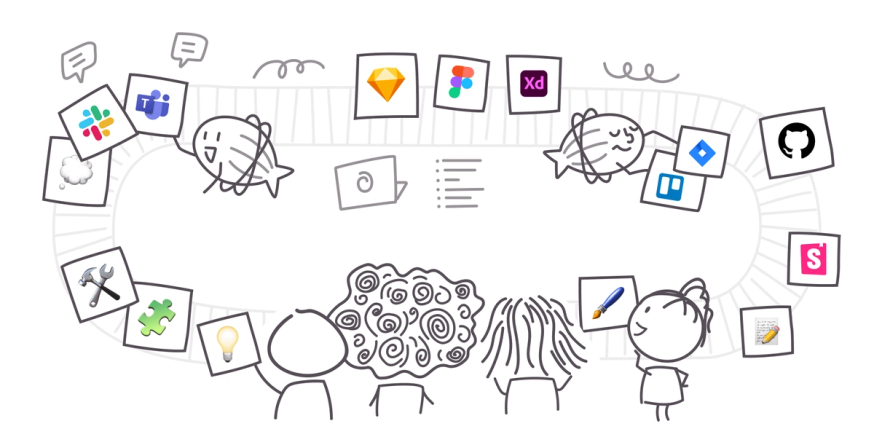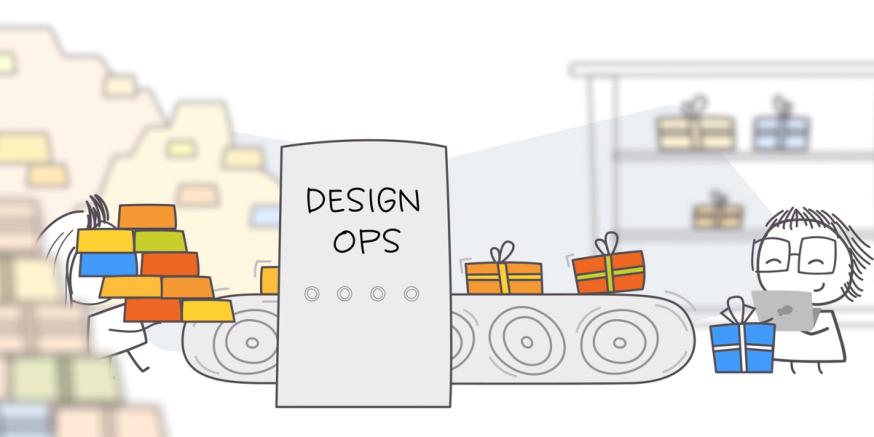DesignsOps, or design operations, is all about amplifying design's value and impact in your organization. It involves creating efficient design workflows and a healthy design culture that empowers designers to stay focused on their craft — while also making sure they can keep up with demands from across the organization for design quality and efficiency.
UX leader and Salesforce exec, Michael Polivka, came up with the idea of “Design Soil” as an analogy for what DesignOps represents for design organizations:
"DesignOps is a whole lot like farming. At its core, the practice is about creating an environment where design can flourish and have an impact on the company—whether it’s centralized or decentralized, a large- or small-sized business, or agency—and its consumers.
"
Creating this “healthy design soil” for many teams means setting up a dedicated DesignOps function within the company. But not every design team needs that. So how do you know if your team does?
To start, ask yourself these questions:
- do your designers regularly have to shift away from important creative work to handle non-design tasks (e.g. explaining designs to non-designers, project management, hiring, etc)?
- is the lack of standardized processes impacting how quickly design gets done and/or how well the end product matches the designs?
- is it difficult for your designers to stay focused due to things outside of their control or expertise, such as communication challenges with other teams, inadequate tools, limited resources, or people management?
If you answered ‘yes’ to any of the above, that means it could be time to think seriously about having a DesignOps function. This isn’t a simple task though, so let’s peel back the layers on what DesignOps actually does, specific ways a DesignOps function can benefit design teams, and signs that your team needs one.
What does a DesignOps function do?
The purpose — and core activities — of a DesignOps function centers around creating operational efficiency across everything that touches the design process, so that actual design work is easier to do and more impactful. As Nick Tree, Design Operations Manager at Boots UK, describes it, “DesignOps helps align the design teams and aims to improve their ways of working.”

Activities like hiring, onboarding, budget, tools, collaboration, project management, team satisfaction, etc., all fall under the operational side of design that DesignOps handles. And if you synthesize those things into a few specific high-level streams of work, DesignsOps takes care of people, processes & tools, and design strategy.
"At Canva we think of DesignOps as three buckets. There’s the process and tools part of it, the people and culture side, and then we have the crafting and strategy side. All of them have different stakeholders, different people working on it, and different tools associated with it. Ultimately, we are responsible for addressing these things and creating a smooth experience for everyone working on the team as a product designer."
When your organization has designated a DesignsOps person or team to take the lead on these focus areas, designers can dedicate themselves more fully to their craft and shipping beautiful products alongside fellow team members in product and engineering.
"We review the tools and processes in place and make sure to solve any challenges and/or difficulties our design teams face. Without DesignOps there is a fractured approach to working which inevitably causes friction. These challenges can be solved simply by having a dedicated person (or team) looking to bring consistency and alignment into the practices. Ultimately, we aim to make everyone’s lives easier and enable the teams to focus on getting products shipped."
Why not leave DesignOps to designers?
You might wonder: is it really necessary to have a dedicated DesignOps function? Most designers are certainly capable, and are the ones who typically manage these things in smaller organizations.
Well, the main reason is that it simply doesn’t scale.
These DesignOps activities are essential to how design gets done in any established design team, but aren’t ideal tasks for designers to be spending their time on. This is especially true when your organization needs to be able to ship products at a high volume with a tight team and an even tighter budget — something that’s all too common in this economic climate.
If you’re leaving these Ops tasks to designers to manage on top of design work, what ends up happening is that DesignOps will get less attention than it deserves.
"Setting up a process, identifying gaps in the process, and then optimizing it. Everyone is already doing that on their level. But imagine that you have a team of 10, 20, 30 people — you need to standardize certain things, if not all. Designers aren’t going to have enough time to do these other things. That’s where this specialized DesignOps person comes in to take the lead on these activities."
The benefits of DesignOps for design (and product) teams
It’s not hard to imagine how design teams would feel relieved to have someone else (i.e., DesignOps) handling the business side of their work so they can feel free to focus on their craft. But that’s just scratching the surface of DesignOps’ benefits.
The beauty of having a dedicated DesignOps function is that everything they do ties directly to design(er)’s success, and everyone they work closely with.

Here are some specific examples of how DesignOps raises the bar on quality and efficiency for everyone on the product team:
- DesignOps standardizes and optimizes design processes and tools so everyone on the product team has the same expectations and support when it comes to anything design-related
- DesignOps identifies and removes obstacles that get in designers’ way in their day-to-day work, whether it has to do with tools, staffing, workload, or team morale
- DesignOps coordinates collaboration and communication across teams, and ensures designers and everyone they interact with get what they need from each other
A few signs your organization needs DesignOps
Having a DesignOps function makes the most sense for established design teams and those building and shipping complex designs, because individual designers on those teams really need structure and predictability. In fact, if your team falls into either category, someone on your design team is likely spending lots of time doing DesignOps work — whether or not they have a DesignOps role or title.
"DesignsOps is important if you’re looking at scaling your operations in general, and one misconception that people typically have is that DesignOps is something that comes at a later stage — something that you do when you’re already big. But actually, everyone is doing Ops since day one of joining. Any designer is doing most of these Ops activities."
To echo the questions we asked in the beginning, here are some definite signs you need to think about a DesignOps team or DesignOps tool:
- There’s a lack of standardized design workflows and best practices, which is impacting both how efficiently your designers can work, and how well your larger product team can match their builds to the designs.
- Designers are finding it more and more difficult to focus on their craft due to things out of their control, such as miscommunication with other teams, loss of historical knowledge due to layoffs, inconsistent quality and value from outsourced resources, etc.
- Designers are slowing down — and some are burning out — from having to shoulder extra work outside of their design role
"When you’ve had to put in another meeting with the designer to understand a requirement, wasted time trying to find the correct prototype or design, when the communication between the teams is breaking down, those point to a need for DesignOps. Ensuring there is structure to the process, getting everyone on board and refining it over time is the goal of a DesignOps specialist."
Solving your team’s biggest DesignOps challenges with Zeplin
Zeplin is an organized workspace that’s welcoming to everyone on your team, and is built to help you achieve these same DesignOps goals around design collaboration, efficiency, and execution.
Zeplin is a tool that:
- provides a standardized way for designers and the rest of the team to collaborate
- reduces and automates tasks, so your designers can stay focused on their craft
- adds structure and predictability to Design Delivery and design documentation, so non-designers can get the information they need without constantly interrupting designers
- enables your team to turn designs into beautiful products faster and more accurately — by helping devs quickly cross-check and align design requirements directly with their code
Teams at Salesforce, Disney, HSBC, Pinterest, Bombas, Starbucks, Cloudera, and many more use Zeplin to implement DesignOps best practices and supercharge their design workflow.
Learn more about doing DesignOps with Zeplin, or contact us to see how Zeplin can work for your team.




